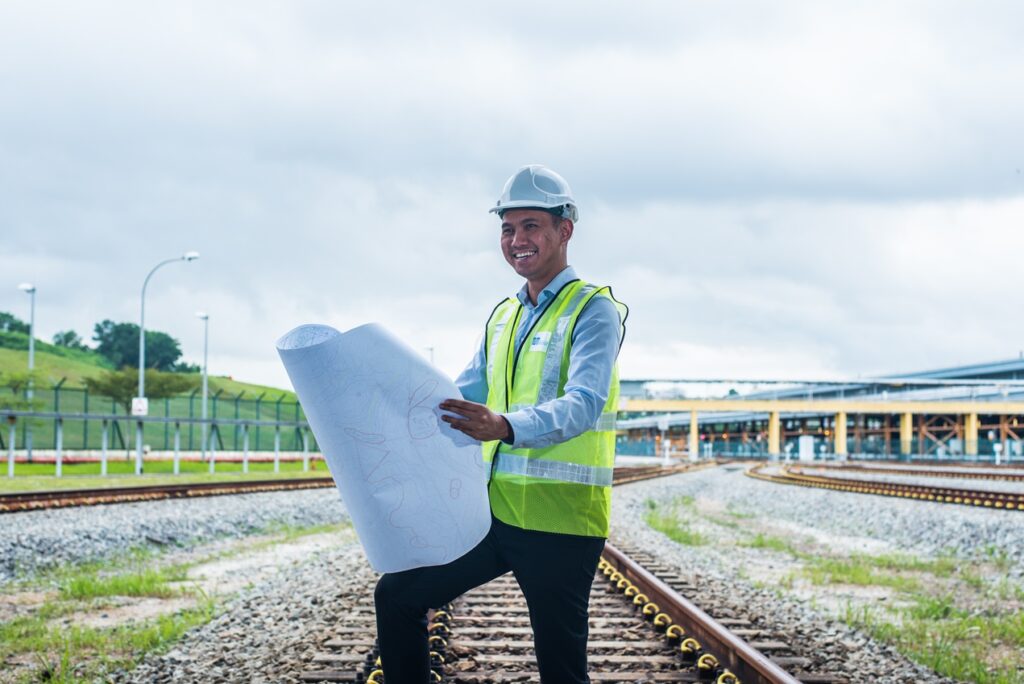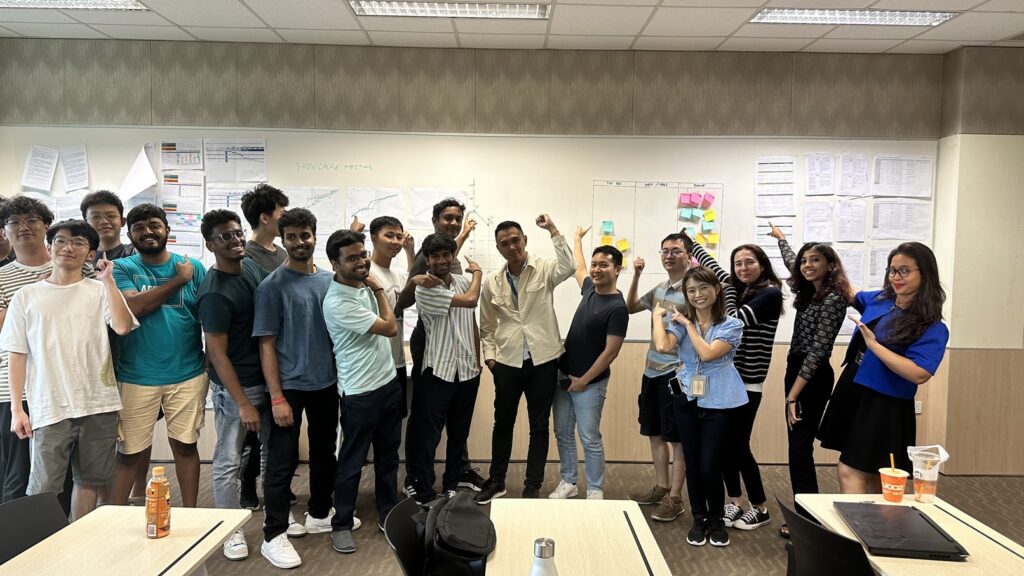
“My journey has been about bridging disciplines, cultures, and even countries—all while keeping things engaging and impactful.”
Q: Could you tell us about your personal background and journey from Indonesia to Singapore?
I began my academic journey in Indonesia with a Bachelor’s degree in Civil Engineering. My curiosity and love for learning took me to Germany, where I pursued a Master’s in Transportation Systems at the Technical University of Munich (TUM), followed by a Doctorate in Civil Engineering through a joint programme between TUM and Nanyang Technological University (NTU) in Singapore.
My doctoral research focused on electrified roadway technology and material science, two areas that reflect my passion for future-forward infrastructure. I initially planned to return to Indonesia after my studies. But with so many exciting opportunities in Singapore, especially in transportation and infrastructure innovation, I stayed. Since then, I’ve worked as an engineer, consultant, researcher, and now, as an educator at TUM Asia, where I get to share my knowledge and ignite the same passion in future civil engineers. I’ve even secured my first international patent through one of our local projects!
Q: What inspired you to pursue a career in Singapore and in TUM Asia?
Singapore is a prime example of how infrastructure and innovation can work hand in hand. In my fields, road infrastructure, nature-based solutions, AI development, and project management, Singapore is often seen as a global leader in both policy and practice.
TUM Asia stood out to me because it combines German academic rigour with Singapore’s practical and dynamic ecosystem. The chance to be part of a world-class institution that brings together Europe and Asia, while shaping future leaders in engineering, was something I couldn’t pass up.

“Every discussion becomes a cross-cultural exchange, Singapore makes that possible.”
Q: How has it been working with an international cohort of students in Singapore?
It’s been incredibly enriching. I’ve taught students from across Asia and beyond. The diversity of perspectives creates a learning environment that’s constantly evolving. Whether we’re debating infrastructure trade-offs or having thoughtful conversations over local teh, these moments reflect the value of a truly global classroom.
Singapore’s unique setting, where East meets West, amplifies this even more. Every lesson becomes a cross-cultural exchange, and as an educator, that’s a gift.
Q: What is your teaching philosophy, and how do you engage students in your classes?
Teaching is more than delivering information, it’s about building a relationship where curiosity and experience meet. I aim to create a safe space where students feel comfortable asking anything. I strongly believe that teaching is most effective when there’s chemistry between the instructor and students.
Sometimes, that means taking learning outside the classroom. If I sense students are especially engaged, we might continue our discussions in a more relaxed setting to keep the momentum going. I also love inviting guest speakers, industry professionals or fellow professors to expose students to different viewpoints.

Q: Any memorable classroom moments or student projects that stood out?
Absolutely. One that stands out was a final-year project where students were tasked with designing highway infrastructure. What made it memorable was their spirited debate about whether the road should be built over a nature reserve. It was inspiring to see them grapple with real-world trade-offs between engineering practicality and sustainability values.
Fun Fact about Dr.-Ing. Ali Bawono
When he’s not exploring geopolitics through The New Map or diving into infrastructure strategy, you’ll find him literally diving into the pool or cycling through Singapore’s park connectors! Despite years of public speaking, he admits he’s still mastering the art of the natural smile on camera. And while golf might be calling, he’s not quite ready to chase tiny balls just yet!
Learn more about Dr.-Ing. Ali Bawono here.
